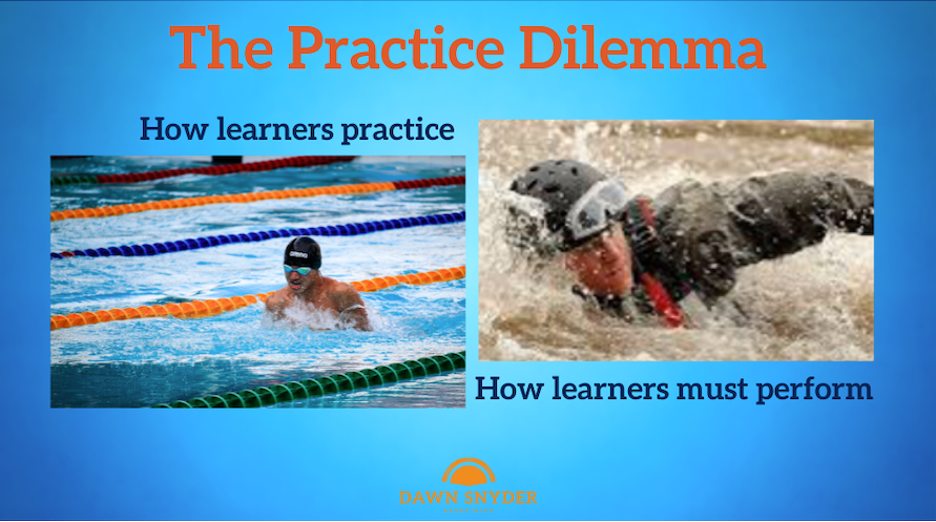
There is no substitute for practice if you want to impact performance. We all know that practice makes proficient, but we often see practice that doesn’t prepare learners for performance. I call this the practice dilemma. It can be a challenge to get practice right.
The rule of effective practice is relatively straightforward: Match practice to critical aspects of the desired performance. That means considering, at a minimum:
- The setting: Where and when do learners perform? Consider all settings for all learners.
- The conditions: Under what conditions does performance occur? Consider all conditions for all learners.
- The requirements for fluency: How well must learners perform right after leaving training?
The Performance Setting
the workflow. Conrad Gottfredson and Bob Mosher, for example, propose the 5 Moments of Need and Workflow Learning, which they outline in their ebook. Ron Jacobs gets results with Structured On-the-Job Training and the new SiTUATE software to support it. Make sure that the practice is fully supported—you don’t want people practicing and making mistakes with your customers.
The Performance Conditions
With limited time and budgets, we often skimp on preparing learners for all of the conditions they encounter, or we omit practice under the more difficult or hard-to-replicate conditions. The solution is to understand the range of conditions and offer practice that samples across the range. If that’s not feasible, then allow learners to choose the conditions most relevant to achieving success.
Requirements for Fluency
Since fluency is a function of both speed and accuracy, we need to offer learners multiple opportunities to get faster and better at what we’re asking them to do. This can be a challenge, since we often offer one practice opportunity—or maybe two—and then move on to the next thing. Offering sufficient practice as well as opportunities to practice spaced over time can help learners meet fluency requirements.
If you have a training program that isn’t delivering the intended performance impact, look at the opportunities for practice. Make sure that learners are practicing the right things the right ways to be successful on the job.
